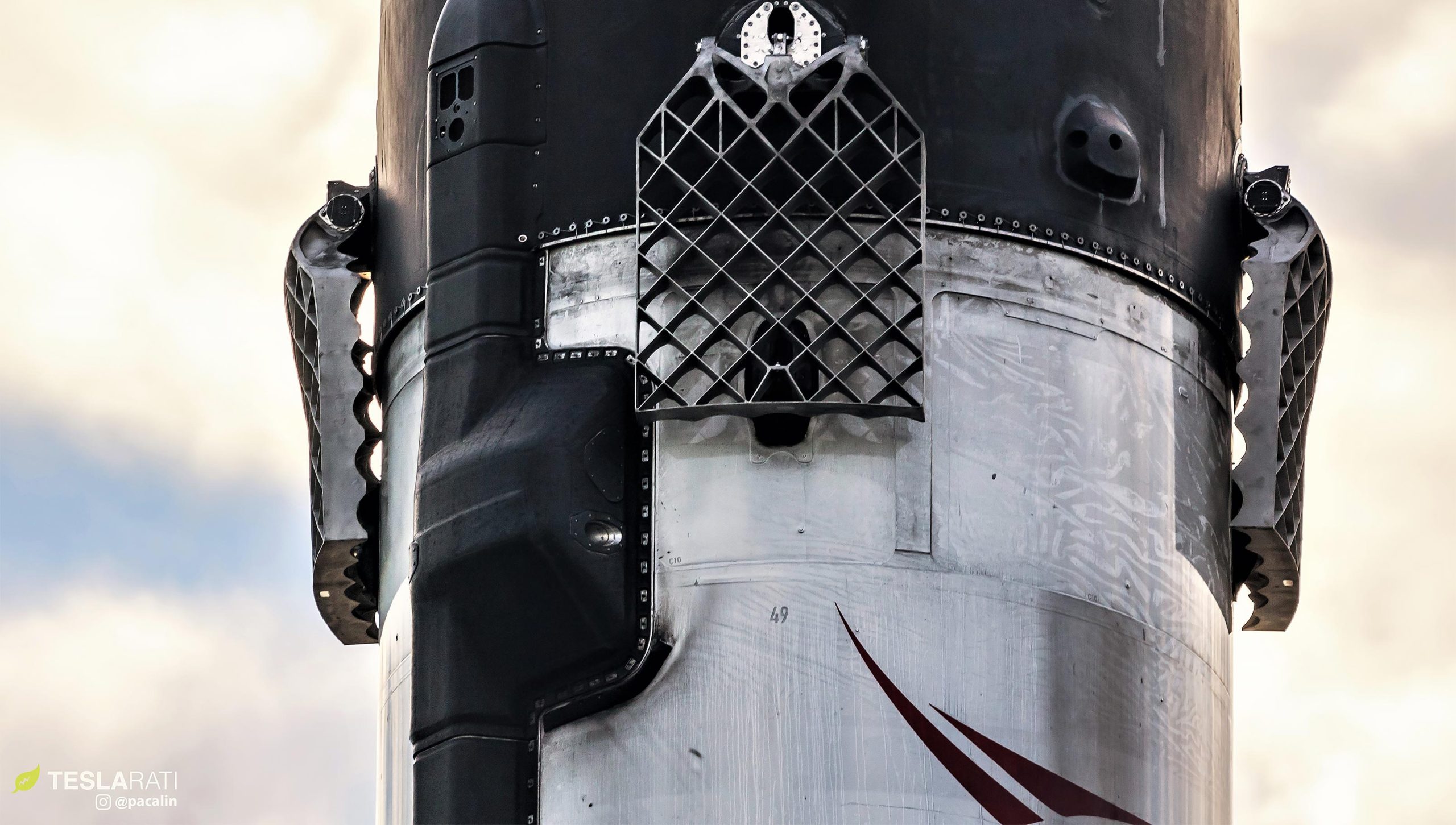
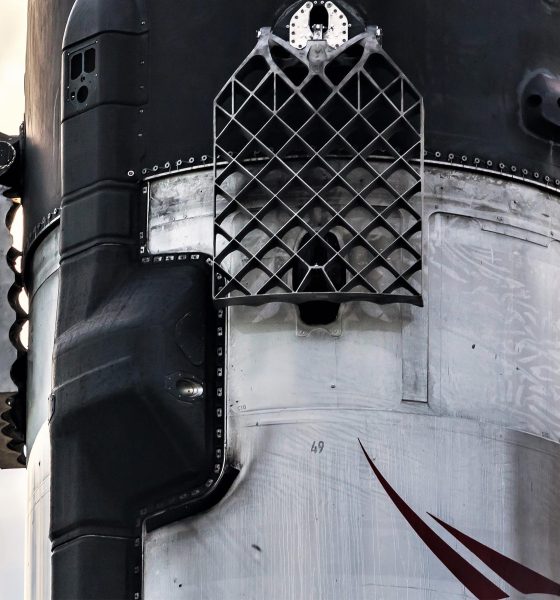
SpaceX
SpaceX ships two Falcon boosters to Florida for a busy spring of launches
Two days before the first attempted launch of Falcon Heavy Block 5, a Florida local caught a separate Falcon booster crossing the state border on its way to one of SpaceX’s two Cape Canaveral launch pads.
Soon after, a separate Falcon booster was tracked heading East through Arizona, Louisiana, and Florida, a rare back-to-back rocket shipment bringing to an end two months of little visible activity. Prelude to a busy spring and early summer manifest, these Falcon booster arrivals signify a new influx of rocket hardware as SpaceX prepares for several upcoming missions. Ranging from Falcon Heavy Flight 3 to Crew Dragon’s critical in-flight abort test, SpaceX has no less than seven launches planned between now and the
Core Spotting – Episode 74
This brings us to another episode of analysis of SpaceX’s ever-changing fleet of Falcon 9 and Falcon Heavy boosters. The cast of flightworthy Block 5 rockets now includes either seven or eight flight-proven boosters and perhaps 2-3 unflown boosters. The new center core believed to be assigned to Falcon Heavy’s third launch (B1057) is reportedly already in Florida, while both flight-proven Falcon Heavy side boosters (B1052 and B1053) were transported to SpaceX’s Pad 39A hangar for refurbishment less than a week after their first launch and landing.
Of the above fleet, B1047, B1048, B1050, B1051, B1052, and B1053 are already known to be located at SpaceX’s Florida facilities, all of which launched from Cape Canaveral within the last five months. After successfully supporting Crew Dragon’s orbital launch debut in March, B1051 is currently assigned to SpaceX’s second West Coast launch of the year and will likely be shipped to California in the next few weeks. B1057, believed to be the next new Falcon Heavy center core, is likely already in Florida to prepare for its a launch as early as late June.
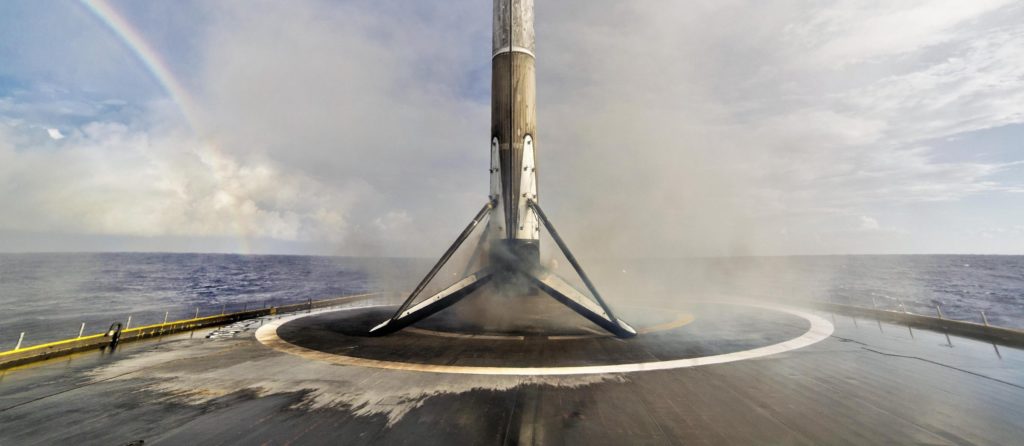
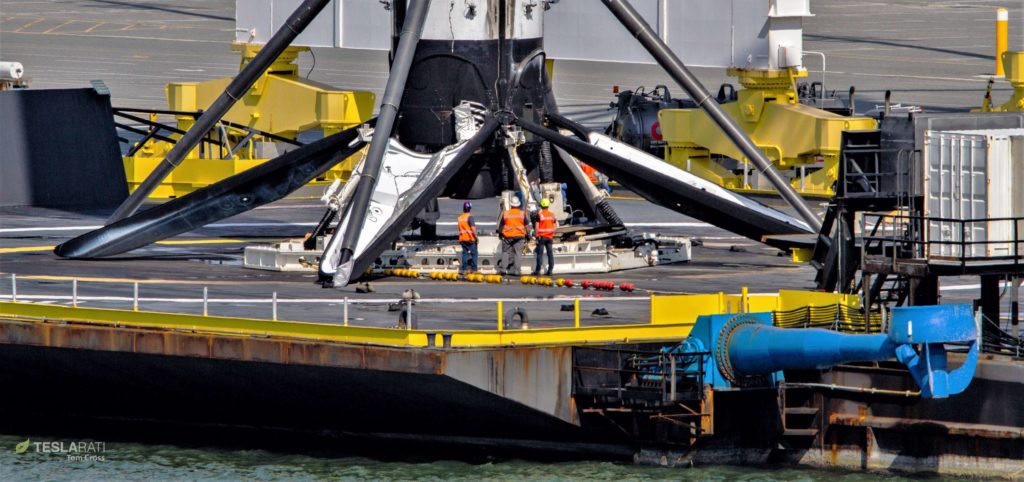
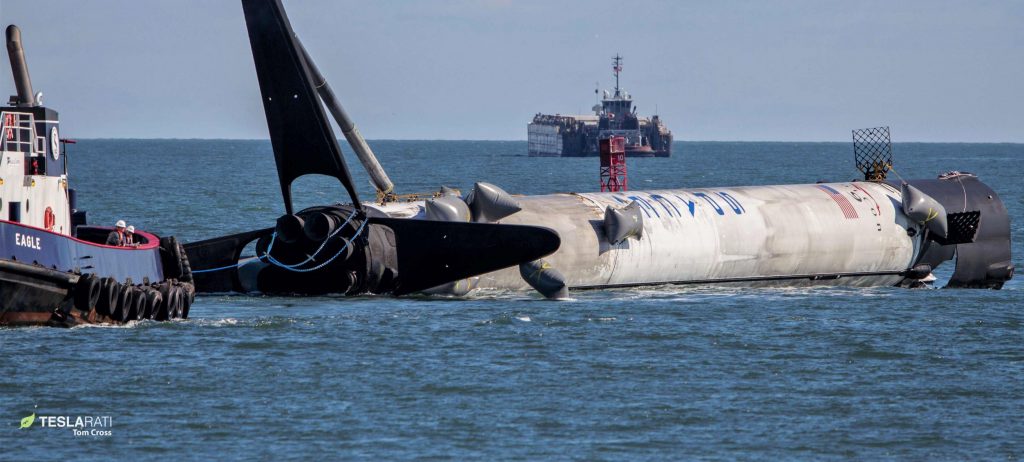
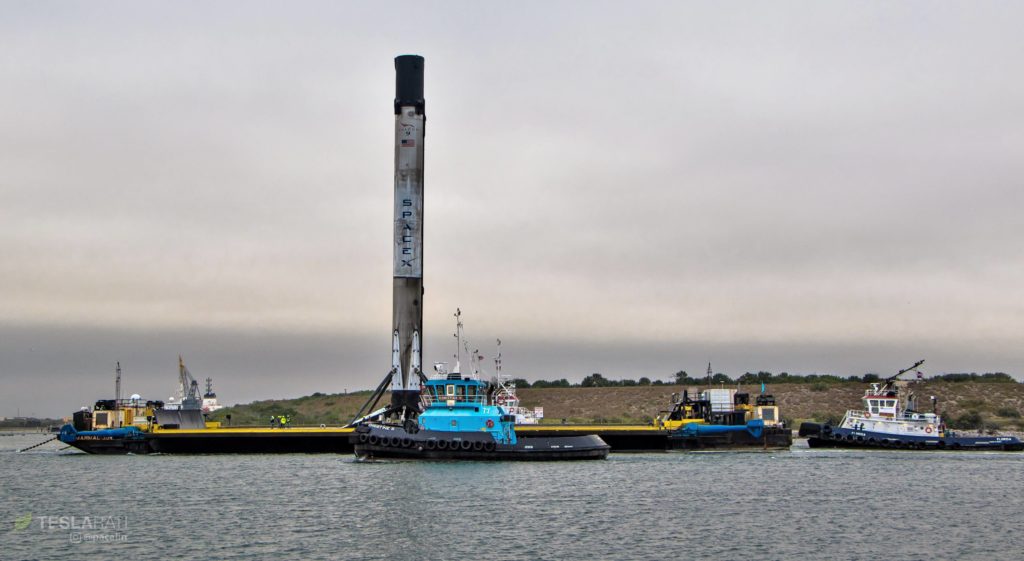
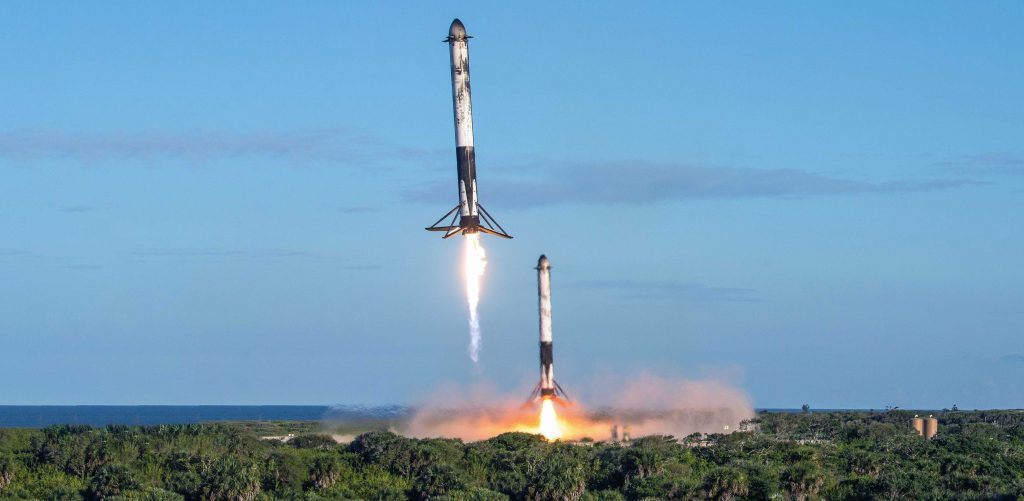
This leaves either two known flight-proven boosters or new Falcon boosters as the likely suspects captured in a duo of April core spottings, one on April 8th and another on April 17th. SpaceX has two flightworthy Falcon 9 Block 5 boosters – B1047 and B1048 – at its Florida facilities, so it’s not out of the question that both spotted cores are new. They could also be B1046 and B1049, both of which recently completed launches from SpaceX’s Vandenberg pad and have been undergoing refurbishment in California. SpaceX’s West Coast manifest could have just two launches for the rest of 2019, meaning that there is no practical reason to keep unassigned boosters nearby.
Meanwhile, SpaceX has plans to begin operational Starlink constellation launches as early as mid-May and likely has more than one planned for 2019. The launch-hungry venture will need as many Falcon 9 boosters as it can get – the more, the merrier. Heading into Q3 2019, SpaceX’s first crewed launch of Crew Dragon (DM-2) is in need of a new Falcon 9 Block 5 rocket and is reportedly scheduled no earlier than (NET) October. One of the cores spotted in the last week or so could be that very rocket, arriving early due to the gravity of DM-2 and the need to double, triple, and quadruple-check the hardware to best ensure mission success.
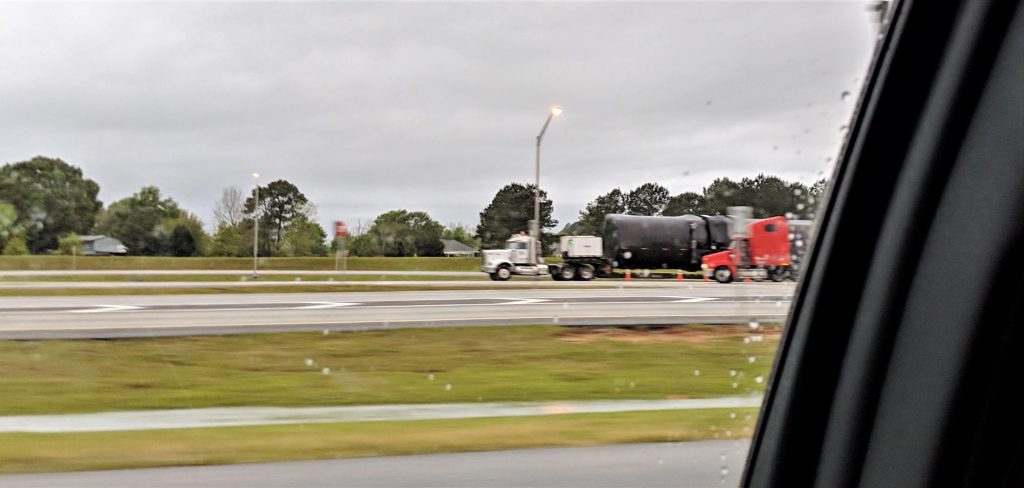
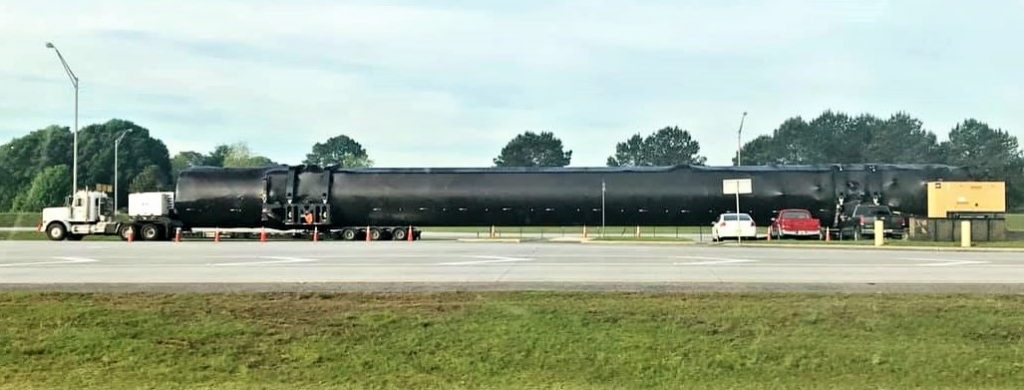
At the end of the day, the most likely explanation is that one of the boosters spotted is new, while one is B1046 or B1049. This is supported by the fact that the second instance was coincidentally tracked throughout its journey, with fans in California, Tuscon, Louisiana, and Florida all catching glimpses between April 12th and April 17th. SpaceX static fires all unflown boosters in McGregor, Texas before they are delivered to a launch site, a procedure that typically takes no less than two weeks from arrival to departure. The booster spotted entering Florida on April 8th, however, does not seem to have been spotted by the same unofficial network of SpaceX fans.
Finally, there is a chance that one of these boosters is a new Falcon 9 assigned to SpaceX’s next Cargo Dragon mission to the International Space Station. CRS-17 is scheduled for launch on April 26th, cutting it extremely close for the booster to be arriving just two weeks before its static fire test.
Check out Teslarati’s Marketplace! We offer Tesla accessories, including for the Tesla Cybertruck and Tesla Model 3.

Investor's Corner
SpaceX IPO is coming, CEO Elon Musk confirms
However, it appears Musk is ready for SpaceX to go public, as Ars Technica Senior Space Editor Eric Berger wrote an op-ed that indicated he thought SpaceX would go public soon. Musk replied, basically confirming it.

Elon Musk confirmed through a post on X that a SpaceX initial public offering (IPO) is on the way after hinting at it several times earlier this year.
It also comes one day after Bloomberg reported that SpaceX was aiming for a valuation of $1.5 trillion, adding that it wanted to raise $30 billion.
Musk has been transparent for most of the year that he wanted to try to figure out a way to get Tesla shareholders to invest in SpaceX, giving them access to the stock.
He has also recognized the issues of having a public stock, like litigation exposure, quarterly reporting pressures, and other inconveniences.
However, it appears Musk is ready for SpaceX to go public, as Ars Technica Senior Space Editor Eric Berger wrote an op-ed that indicated he thought SpaceX would go public soon.
Musk replied, basically confirming it:
As usual, Eric is accurate
— Elon Musk (@elonmusk) December 10, 2025
Berger believes the IPO would help support the need for $30 billion or more in capital needed to fund AI integration projects, such as space-based data centers and lunar satellite factories. Musk confirmed recently that SpaceX “will be doing” data centers in orbit.
AI appears to be a “key part” of SpaceX getting to Musk, Berger also wrote. When writing about whether or not Optimus is a viable project and product for the company, he says that none of that matters. Musk thinks it is, and that’s all that matters.
It seems like Musk has certainly mulled something this big for a very long time, and the idea of taking SpaceX public is not just likely; it is necessary for the company to get to Mars.
The details of when SpaceX will finally hit that public status are not known. Many of the reports that came out over the past few days indicate it would happen in 2026, so sooner rather than later.
But there are a lot of things on Musk’s plate early next year, especially with Cybercab production, the potential launch of Unsupervised Full Self-Driving, and the Roadster unveiling, all planned for Q1.
News
SpaceX reportedly mulling IPO, eyeing largest of all time: report
“I do want to try to figure out some way for Tesla shareholders to participate in SpaceX. I’ve been giving a lot of thought to how to give people access to SpaceX stock,” Musk said.

SpaceX is reportedly mulling an initial public offering, eyeing what would be the largest valuation at the time of availability of all time, a new report from Bloomberg said on Tuesday.
It is one of many reports involving one of Elon Musk’s companies and a massive market move, as this is not the first time we have seen reports of an IPO by SpaceX. Musk himself has also dispelled other reports in the past of a similar nature, including an xAI funding round.
SpaceX and Musk have yet to comment on the report. In the past, untrue reports were promptly replied to by the CEO; this has not yet gained any response, which is a good sign in terms of credibility.
However, he said just a few days ago that stories of this nature are inaccurate:
“There has been a lot of press claiming SpaceX is raising money at $800B, which is not accurate. SpaceX has been cash flow positive for many years and does periodic stock buybacks twice a year to provide liquidity for employees and investors. Valuation increments are a function of progress with Starship and Starlink and securing global direct-to-cell spectrum that greatly increases our addressable market. And one other thing that is arguably most significant by far.”
There has been a lot of press claiming @SpaceX is raising money at $800B, which is not accurate.
SpaceX has been cash flow positive for many years and does periodic stock buybacks twice a year to provide liquidity for employees and investors.
Valuation increments are a…
— Elon Musk (@elonmusk) December 6, 2025
Musk has discussed a potential IPO for SpaceX in recent months, as the November 6 shareholder meeting, as he commented on the “downsides” of having a public company, like litigation exposure, quarterly reporting pressures, and other inconveniences.
Nevertheless, Musk has also said he wants there to be a way for Tesla shareholders to get in on the action. At the meeting in early November, he said:
“I do want to try to figure out some way for Tesla shareholders to participate in SpaceX. I’ve been giving a lot of thought to how to give people access to SpaceX stock.”
Additionally, he added:
“Maybe at some point., SpaceX should become a public company despite all the downsides of being public.”
Musk has been historically reluctant to take SpaceX public, at times stating it could become a barrier to colonizing Mars. That does not mean it will not happen.
Bloomberg’s report cites multiple unidentified sources who are familiar with the matter. They indicate to the publication that SpaceX wants to go public in mid-to-late 2026, and it wants to raise $30 billion at a valuation of around $1.5 trillion.
This is not the first time SpaceX has discussed an IPO; we reported on it nine years ago. We hope it is true, as the community has spoken for a long time about having access to SpaceX stock. Legendary investor Ron Baron is one of the lucky few to be a SpaceX investor, and said it, along with Tesla, is a “lifetime investment.”
Tesla bull Ron Baron reveals $100M SpaceX investment, sees 3-5x return on TSLA
The primary driver of SpaceX’s value is Starlink, the company’s satellite internet service. Starlink contributes 60-70 percent of SpaceX’s revenue, meaning it is the primary value engine. Launch services, like Falcon 9 contracts, and the development of Starship, also play supporting roles.
News
SpaceX reaches incredible milestone with Starlink program

SpaceX reached an incredible milestone with its Starlink program with a launch last night, as the 3,000th satellite of the year was launched into low Earth orbit.
On Monday, SpaceX also achieved its 32nd flight with a single Falcon 9 rocket from NASA’s Kennedy Space Center.
The mission was Starlink 6-92, and it utilized the Falcon 9 B1067 for the 32nd time this year, the most-used Falcon booster. The flight delivered SpaceX’s 3000th Starlink satellite of the year, a massive achievement.
There were 29 Starlink satellites launched and deployed into LEO during this particular mission:
Falcon 9 launches 29 @Starlink satellites from Florida pic.twitter.com/utKrXjHzPN
— SpaceX (@SpaceX) December 9, 2025
SpaceX has a current goal of certifying its Falcon boosters for 40 missions apiece, according to Spaceflight Now.
The flight was the 350th orbital launch from the nearby SLC-40, and the 3,000 satellites that have been successfully launched this year continue to contribute to the company’s goal of having 12,000 satellites contributing to global internet coverage.
There are over five million users of Starlink, the latest data shows.
Following the launch and stage separation, the Falcon 9 booster completed its mission with a perfect landing on the ‘Just Read the Instructions’ droneship.
The mission was the 575th overall Falcon 9 launch, highlighting SpaceX’s operational tempo, which continues to be accelerated. The company averages two missions per week, and underscores CEO Elon Musk’s vision of a multi-planetary future, where reliable connectivity is crucial for remote work, education, and emergency response.
As Starlink expands and works toward that elusive and crucial 12,000 satellite goal, missions like 6-92 pave the way for innovations in telecommunications and enable more internet access to people across the globe.
With regulatory approvals in over 100 countries and millions of current subscribers, SpaceX continues to democratize space, proving that reusability is not just feasible, but it’s also revolutionary.








